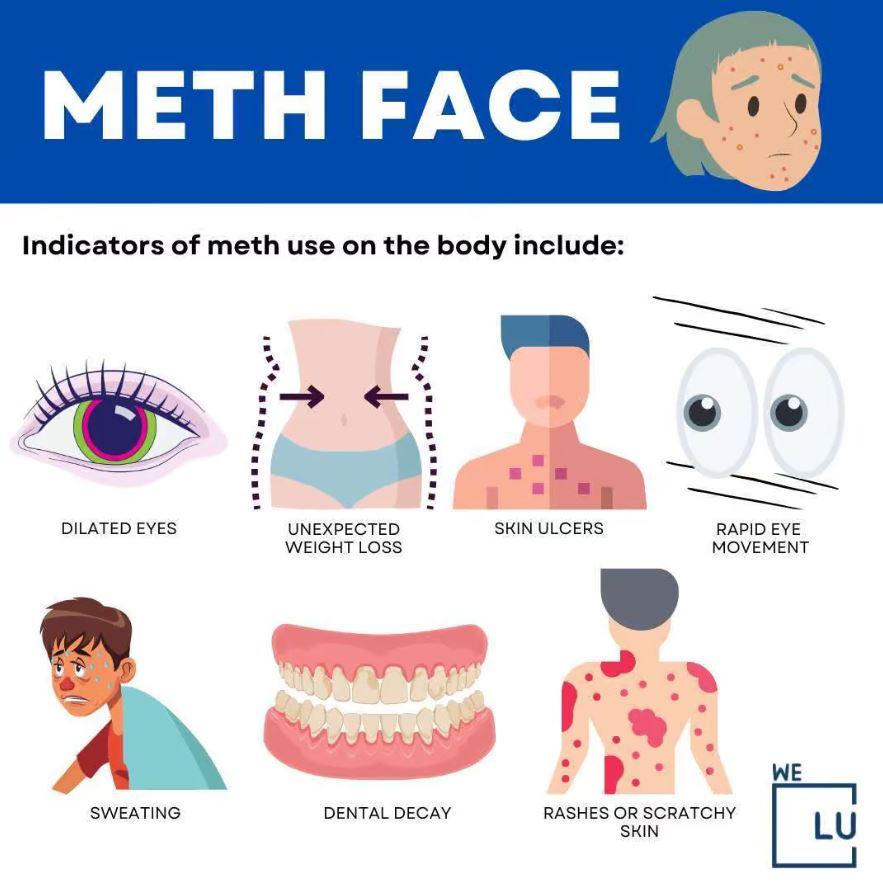Methamphetamine also known by its alias meth an extremely toxic and potent stimulant that wrecks havoc on both the mind and body of those who take it. Although the negative effects of methamphetamine on body and the brain have been well-documented and documented, the effects of the effects on skin are often not considered. Meth sores, also referred to as methamphetamine-induced skin lesions, serve as a visible reminder of the destructive consequences of meth abuse. These infected and painful sores are most often seen on exposed body parts like the arms, face and legs, acting as physical signs of the toll taken by methamphetamine, a devastating drug.
Understanding Methamphetamine-induced Skin Lesions:
Meth sores occur as a direct result of the biological modifications caused by methamphetamine. The drug triggers a cascade of harmful effects on your body, which include decreased blood flow, impaired wound healing and increased vulnerability to infections. These factors, combined with the behavioral effects of methamphetamine abuse, such as obsessive scratching and scrubbing, contribute to the formation of open and painful sores.
Location and Appearance:
Lesions of the skin caused by Meth can vary in appearance and severity. They generally begin as small, red, and itchy bumps which quickly progress to more extensive open sores. The lesions are found all over the body, but they are most commonly observed on the face, arms and legs. The visibility of these lesions increases the psychological and social repercussions since meth sores are difficult to conceal and may be viewed as stigmatizing by those suffering with addiction.
Health Risks and Complications
The open nature of meth-sores exposes people to a greater risk of infection. Bacterial infections, like cellulitis, can result from the introduction of pathogens into the open wounds. Moreover, the compulsive picking and scratching associated with methamphetamine abuse may increase the possibility of secondary infections. They can also cause further tissue injury. In the worst cases, infections could spread to the entire body with life-threatening implications.
Psychosocial Impact:
Beyond the physical implications, the psychosocial impact of meth-related sores should not be overlooked. The visible and distressing nature of meth sores often results in an extreme social isolation, a decrease in self-esteem and a diminished levels of quality of life for the people affected. The presence of meth-related sores can trigger negative reactions from others, thereby perpetuating societal stigmas and preventing their reintegration into the community.
Treatment and Prevention:
The treatment of meth sores requires an array of approaches that address both the addiction and the sores that result from it. The most comprehensive treatment for addiction, including counseling, therapy for behavioral disorders, and medical interventions, are crucial for tackling methamphetamine dependence. Also, dermatological procedures such as wound care, antibiotics to treat infection, and scar management may help improve the appearance of the skin and aid in healing.
Prevention efforts are equally vital. Awareness campaigns for the public that draw attention to the physical effects of methamphetamine usage can dissuade potential users and motivate those suffering from addiction to seek treatment. Accessible addiction treatment services along with support systems play a pivotal role in preventing the onset of meth-related sores by addressing the root of the problem.
Conclusion
Methamphetamine-induced skin lesions, commonly known as meth sores, serve as a stark reminder of the detrimental impact of methamphetamine abuse on the skin. These painful and visible lesions on the arms, face, and legs illustrate the damage caused by methamphetamine, a destructive drug. Beyond the physical damage, the psychosocial repercussions of meth sores are a further source of issues that people who suffer from meth sores face. By increasing awareness, encouraging prevention, and offering comprehensive treatments, society can contribute toward reducing the frequency of meth sores and supporting people on their way to recovery.
Also check: Pass a methamphetamine drug test

